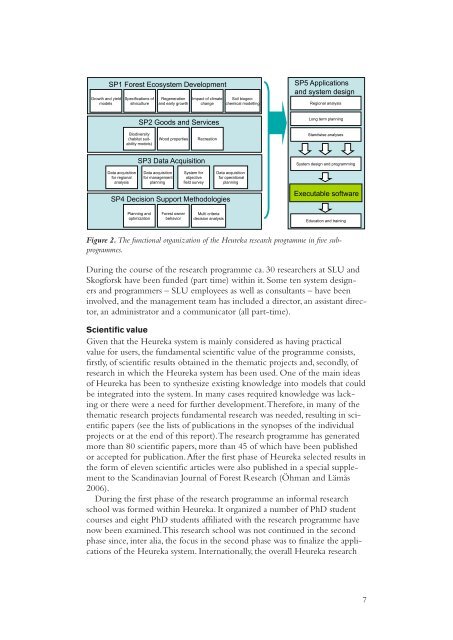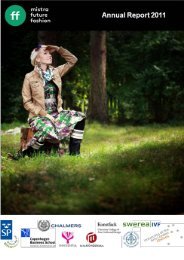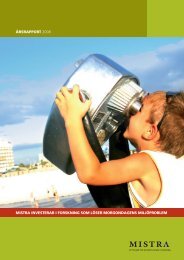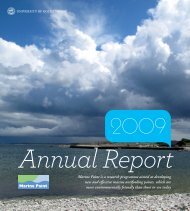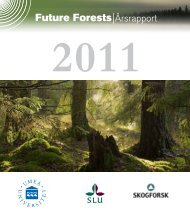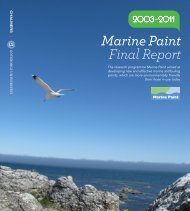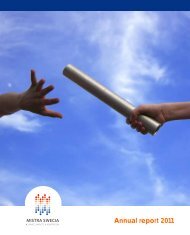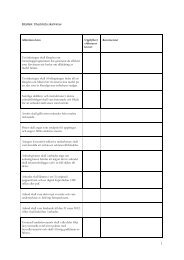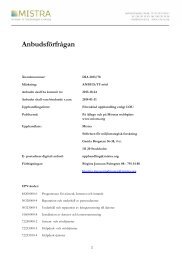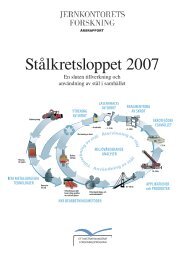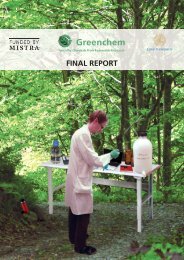The Heureka Research Programme - Mistra
The Heureka Research Programme - Mistra
The Heureka Research Programme - Mistra
You also want an ePaper? Increase the reach of your titles
YUMPU automatically turns print PDFs into web optimized ePapers that Google loves.
Growth and yieldmodelsSP1 Forest Ecosystem DevelopmentSpecifications ofsilvicultureRegenerationand early growthImpact of climate Soil biogeochangechemical modellingSP5 Applicationsand system designRegional analysisSP2 Goods and ServicesLong term planningBiodiversity(habitat suitabilitymodels)Wood propertiesRecreationStandwise analysesData acquisitionfor regionalanalysisSP3 Data AcquisitionData acquisitionfor managementplanningSystem forobjectivefield surveySP4 Decision Support MethodologiesData acquisitionfor operationalplanningSystem design and programmingExecutable softwarePlanning andoptimizationForest ownerbehaviorMulti criteriadecision analysisEducation and trainingFigure 2. <strong>The</strong> functional organization of the <strong>Heureka</strong> research programme in five subprogrammes.During the course of the research programme ca. 30 researchers at SLU andSkogforsk have been funded (part time) within it. Some ten system designersand programmers – SLU employees as well as consultants – have beeninvolved, and the management team has included a director, an assistant director,an administrator and a communicator (all part-time).Scientific valueGiven that the <strong>Heureka</strong> system is mainly considered as having practicalvalue for users, the fundamental scientific value of the programme consists,firstly, of scientific results obtained in the thematic projects and, secondly, ofresearch in which the <strong>Heureka</strong> system has been used. One of the main ideasof <strong>Heureka</strong> has been to synthesize existing knowledge into models that couldbe integrated into the system. In many cases required knowledge was lackingor there were a need for further development. <strong>The</strong>refore, in many of thethematic research projects fundamental research was needed, resulting in scientificpapers (see the lists of publications in the synopses of the individualprojects or at the end of this report). <strong>The</strong> research programme has generatedmore than 80 scientific papers, more than 45 of which have been publishedor accepted for publication. After the first phase of <strong>Heureka</strong> selected results inthe form of eleven scientific articles were also published in a special supplementto the Scandinavian Journal of Forest <strong>Research</strong> (Öhman and Lämås2006).During the first phase of the research programme an informal researchschool was formed within <strong>Heureka</strong>. It organized a number of PhD studentcourses and eight PhD students affiliated with the research programme havenow been examined. This research school was not continued in the secondphase since, inter alia, the focus in the second phase was to finalize the applicationsof the <strong>Heureka</strong> system. Internationally, the overall <strong>Heureka</strong> research7


